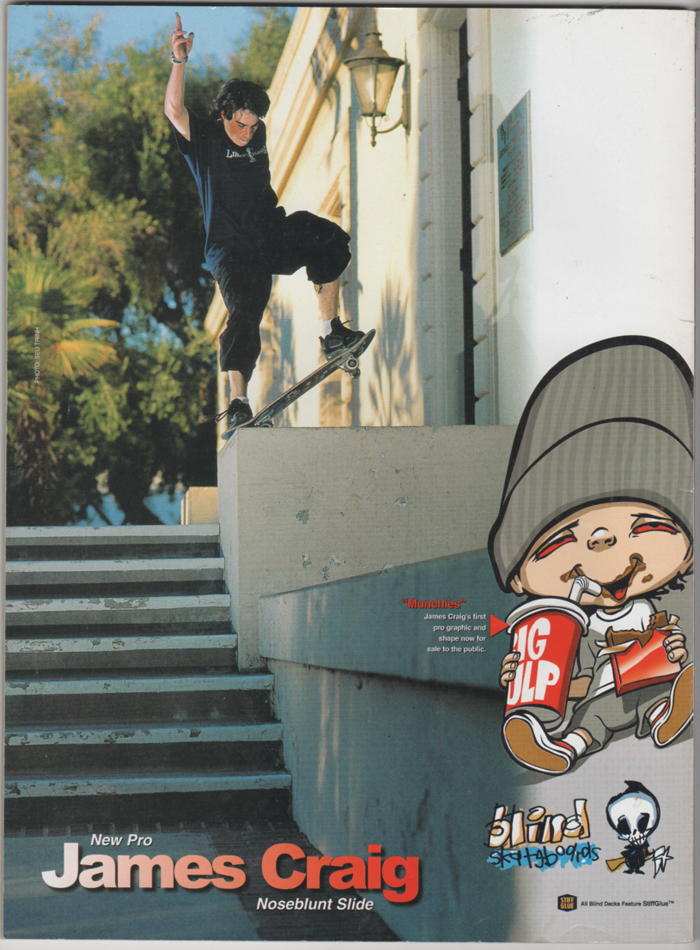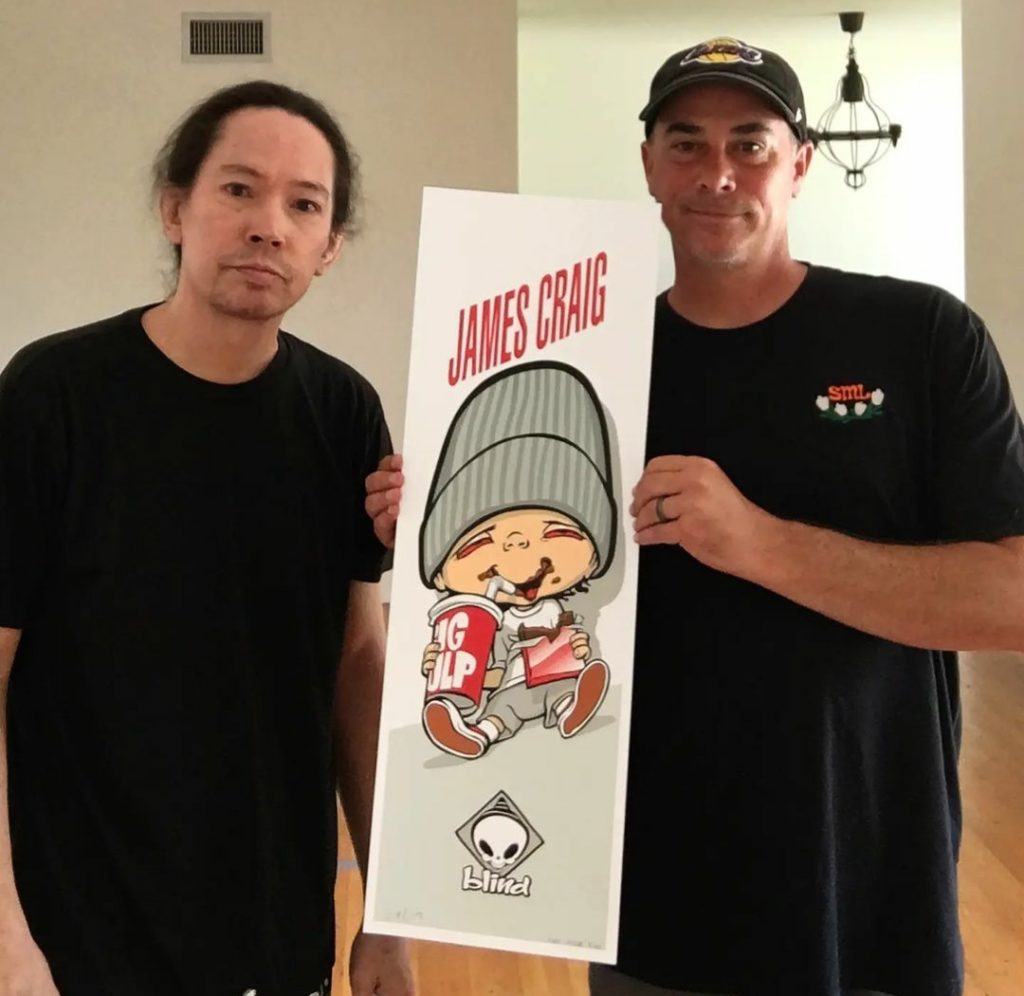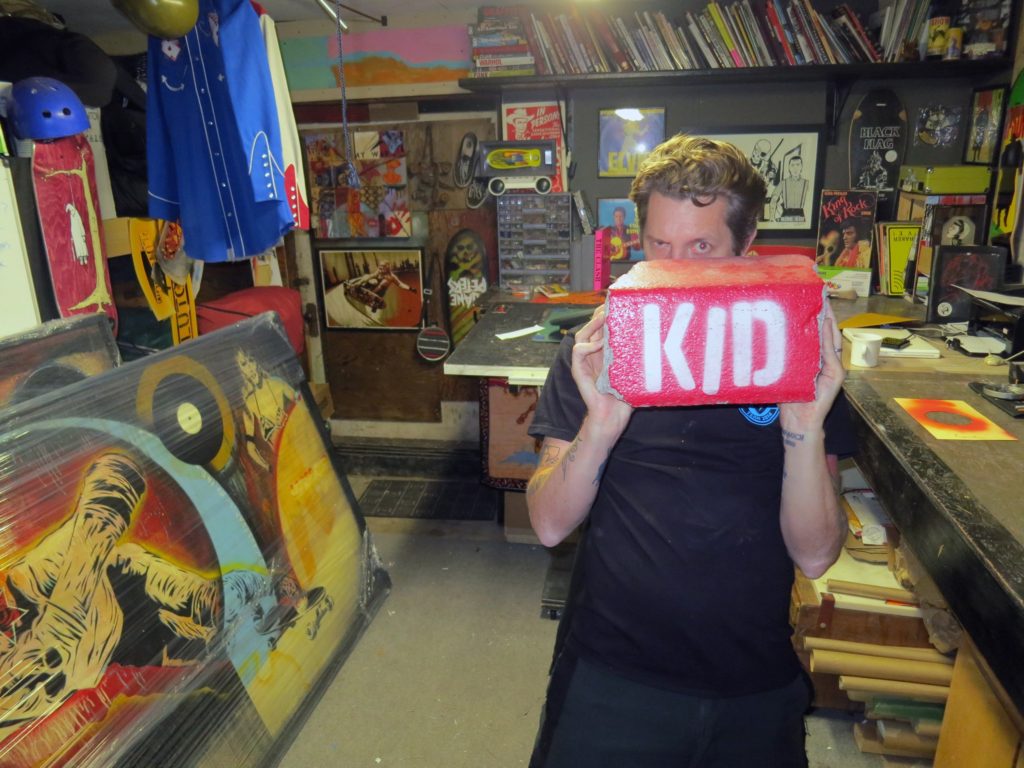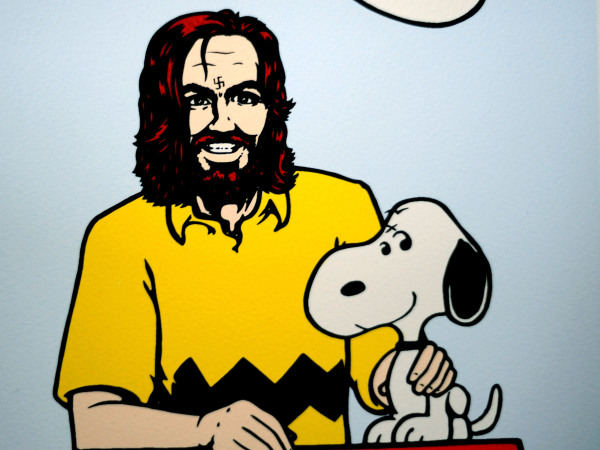
Did you grow up skating World/Blind/101 stuff like seemingly everybody did in the early 90’s? Were you familiar with Marc’s art before you rode for Blind?
I was a huge World/101/Blind fan. Blind video is still a top 3 video all time for me. Guy was/is and will always be my favorite skater of all time. I mean Gonz, J Lee and Rudy! It was my shit for sure. Marc’s art was a huge impact because it was powerful, controversial and just fun/entertaining.
When I knew Marc was going to do graphics for me I was truly honored. He killed it! Never in a million years would imagine people would be hitting me up over 2 decades later to see if I had them to sell. Sadly, I don’t even have an original of my Munchies board. I do have a Tech deck/Tech Dude (a lil’ action figure) of it, so that’s super cool.
You seemed like you were pretty tight with Ronnie. Is that how you got on Blind or did you become close afterwards? I’m trying to remember who you rode for before that…
Before Blind I was on a small company out of Grind King trucks called Society. It was my brother Jeremy, Luis Cruz, Robbie McKinley, Ryan Kenreich (RIP) and myself. Then I was briefly [sponsored by] Formula One (out of Acme), and then World flow. I ended up getting paid to be on Prime after everyone left. Then, Blind became my permanent board sponsor for the rest of my skate career.
I’ve known Ronnie since I was like 13 or 14, but the reason I actually got on Blind was Gideon Choi. Gideon was like one of my big brothers. Gideon told me (which I believe 100%) that Ronnie said no to me getting on initially. Ronnie denies it to this day, but why would Gid lie?
I always love hearing anybody talk about Gideon Choi; that switch tre in Trilogy in the halls of that school (I think in Long Beach?) is forever etched into my brain.
Gid had the best switch tre’s. It’s funny because I’ll tell him from time to time he’s on a short list and that one gets brought up almost every time by people who know. He’s a cult classic and doesn’t believe it at all, but we all know. That spot is close to Long Beach but it’s technically in Garden Grove.
Anyway, Ronnie and I have been really good friends for almost 30 years and he’s one of the most talented humans I’ve ever met in my life. He’s good at anything he puts his mind to. Top 10 talent ever in my books, and I’m not saying that lightly.
I know you were team manager at Dwindle for a second after you retired – did you gradually transition into that role or did you just decide that it was finally time to retire and just straight up switched one day?
The TM thing I verbally spoke into existence around 2004 when Corey [Shepard] and I skated/hung out with [Jake] Duncombe; it just seemed to be perfect for my personality. I’ve always appreciated my friends who brought me up and taught me to do things the right way. I always wanted to pass that on and help the next generation of skaters. I’ve been fortunate enough to be in the right place at the right time.
I started as the TM for Dwindle in 2010 I believe, after Paul Sharpe left to go to Etnies. I knew my career was winding down in ‘07ish and honestly felt better on my board and in my mind since the late 90’s/2000’s. I shattered my humorous bone in ‘08 and went back to work at Liberty board shop, my fam since 93. Became the manager at the shop and did some fun stuff with them. Then Bod hit me up and I was the Dwindle TM from 2010 until 2017. Dwindle let me go just after Enjoi King of the Road. They gave me a great severance package! They didn’t have to do that, but I think Bod and Gary Valentine wanted to make sure I was as good as I could be.
What have you done since? I think you told me you were an agent?
I’d been talking with Ryan [Clements] about maybe coming to Excel Management for a little bit after judging contests with that crew for a bit. After I got let go from Dwindle, I was on the hunt for something in skating. Clem knew I had a decent chance to land a job at a brand and basically just offered me an opportunity to work for Excel right away. I was super appreciative and it ended up being the best decision I’ve made.
Finally,I gotta ask for my own self, how’d that work out with MURS doing your song in What If? I loved all that Living Legends stuff back in the day and that tripped my teenage self out to hear a custom MURS track in your part.
The MURS thing was just a fan meeting some rappers I was super fans of, and we ended up becoming pretty close friends. He wanted to do the track; my homie Justin Martin did a couple tracks for him and thus became my own personalized some for my What If part. I was just a fan who got lucky to have a legend in my eyes do me a great favor.




